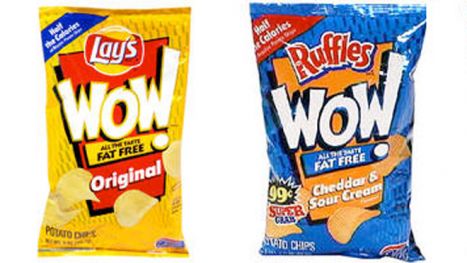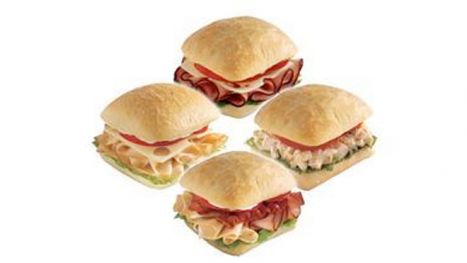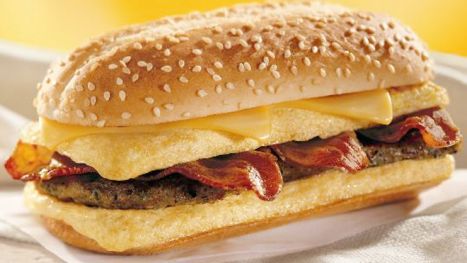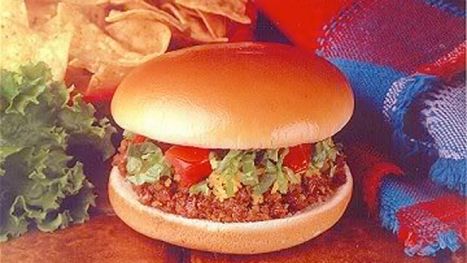1 Lay's WOW Chips

In 1998, Lay's released WOW chips as a low-calorie snack food made with the fat-free substitute Olestra. What could be better than having your chips without gaining a pound? How about if you need to run to the bathroom constantly. The FDA required a warning on WOW chips stating that Olestra “may cause anal leakage.” After consumers realized the side effects, demand for WOW chips plummeted.
2 McLobster
For some reason, McDonald’s thought it could market quality seafood in a fast food joint. The sandwich, which is lobster, special sauce and lettuce shoved in a hot dog bun, didn’t go over too well except with people in New England and eastern Canada. In 2011, there were Internet rumors that it was making a nationwide come back, but as with all foods with a mythical mystique, this was false.
3 Frescata

In 2006, Wendy’s released Frescata deli sandwiches to compete with Subway restaurants. With fancy options like ham and cheese with pesto, the made-to-order sandwiches were sure to be a hit. But Wendy’s customers didn’t go for them because they took longer to prepare, compared with the assembly line burgers. Wendy’s discontinued them in 2007.
4 Burger King Table Service
In 1991, Burger King offered table service for those who didn’t want the extra hassle of carrying their own tray to the table. Not only that, during the hours of 5pm to 8pm, customers got to snack on complementary popcorn while awaiting their meal. Not bad, huh. Surprisingly, the service didn’t catch on with customers who didn't appear to mind schlepping their trays.
5 Wendy’s Superbar
In the late ‘80s, Wendy’s launched the Superbar, offering everything from salad to hot food, like Mexican, and Italian items. The problem was that is wasn’t fast food and it wasn’t high enough quality slow food. In the early 1990s, the Superbar became extinct, although there is an online effort to bring it back.
6 Enormous Omelet Sandwich

In 2005, Burger King thumbed its nose at the health conscious eater with this colossal egg sandwich consisting of eggs, cheese, bacon and sausage on a sesame seed roll. If the size didn’t stop people, the 330 milligrams of cholesterol and 1940 milligrams of sodium did. At first breakfast sales skyrocketed, but then the novelty wore off. It’s now discontinued in the U.S., but it is still clogging the arteries of those overseas.
7 McSpaghetti
McDonald’s proved it should stay out of Italian cuisine business with its version of pasta and red sauce. Reviews of this dish complained it was bland and it was quickly discontinued. But in other countries, like the Philippines, McDonald's still offers McSpaghetti on their menu, often paired with a fried chicken leg.
8 Arch Deluxe
Marketed as a burger for “grown-up” tastes, the Arch Deluxe was basically a Quarter Pounder with cheese on a different kind of bun, with peppered bacon and a top-secret mustard and mayonnaise sauce. After a 300 million dollars ad campaign, McDonald's execs, who had bet on $1 billion in sales, realized the burger just didn't taste very good.
9 Hula Burger
In 1962, McDonald’s introduced this meatless burger made out of a pineapple slice to cater to Catholic customers who were observing Lent. It failed miserably. Non-meat-eating Catholics preferred a different alternative to the burger on the McDonald’s menu, the Filet-O-Fish sandwich.
10 Bell Beefer

Taco Bell tried its hand at burgers—sort of—with this sloppy-joe-like creation to compete with other fast food chains. The sandwich simply took everything that’s in a taco -- ground beef, cheese and lettuce -- and put it on a bun. Taco Bell discontinued the BellBeefer at the end of the 1980s after less than stellar sales, although the sandwich did have a loyal fan base, which to this day continues to petition the company to bring it back.







